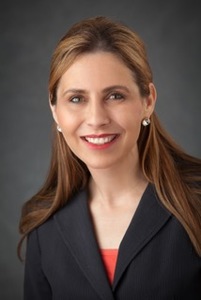Weathering Natural Disasters: Lessons Learned at MD Anderson Cancer Center
// By Lisa Ellis //

Crista Latham, vice president of strategic communications at MD Anderson Cancer Center
Most health systems today have an established social media presence. But is it ready and able to flex in times of emergency? When Hurricane Harvey struck the greater Houston area in August 2017, it left widespread flooding and devastation in its wake. With roads impassable and power outages in many areas, the University of Texas MD Anderson Cancer Center’s communication team quickly stepped up to leverage technology—including tapping into its strong social media footprint—to manage its response internally, and connect with residents throughout the region.
The health system’s ability to put technology to work to share critical information during the storm is a textbook case of how the latest tools can enable organizations to support employees, patients, and neighbors during a crisis.
The University of Texas MD Anderson Cancer Center has been ranked by U.S. News & World Report as the nation’s top hospital for cancer care for 13 of the past 16 years. With so many people and families relying on MD Anderson’s life-saving care, an emergency plan is essential so that in any situation, patients and their families continue to have access to timely information, says Crista Latham, vice president of strategic communications at MD Anderson.
This content is only available to members.
Please log in.
Not a member yet?
Start a free 7-day trial membership to get instant access.
Log in below to access this content:

